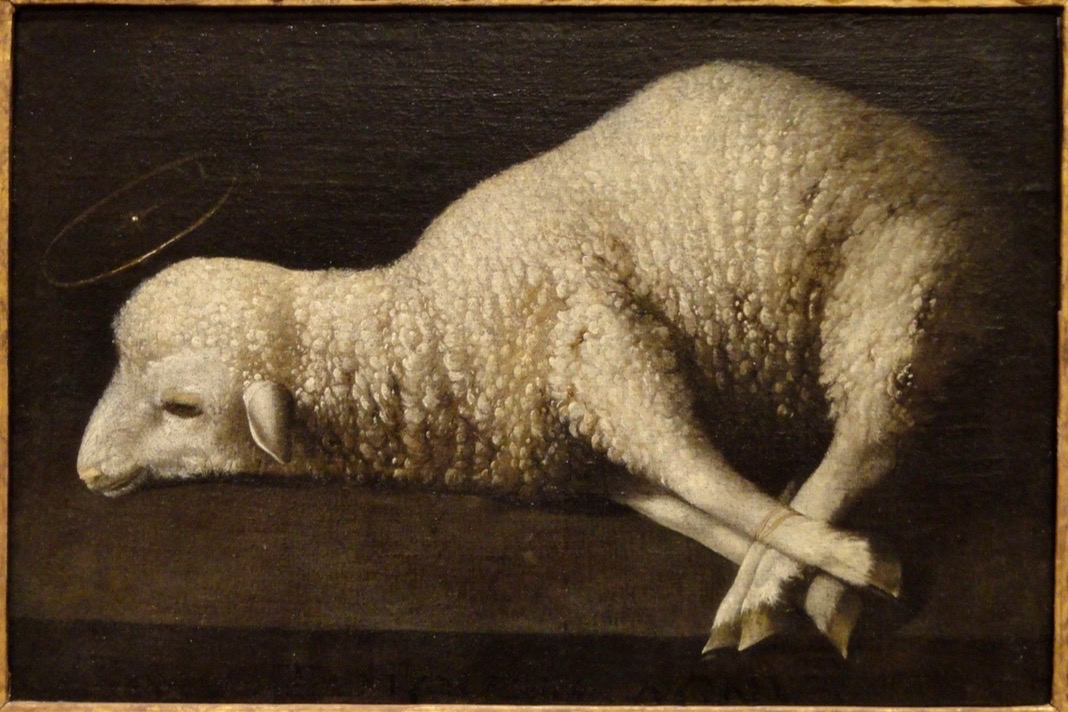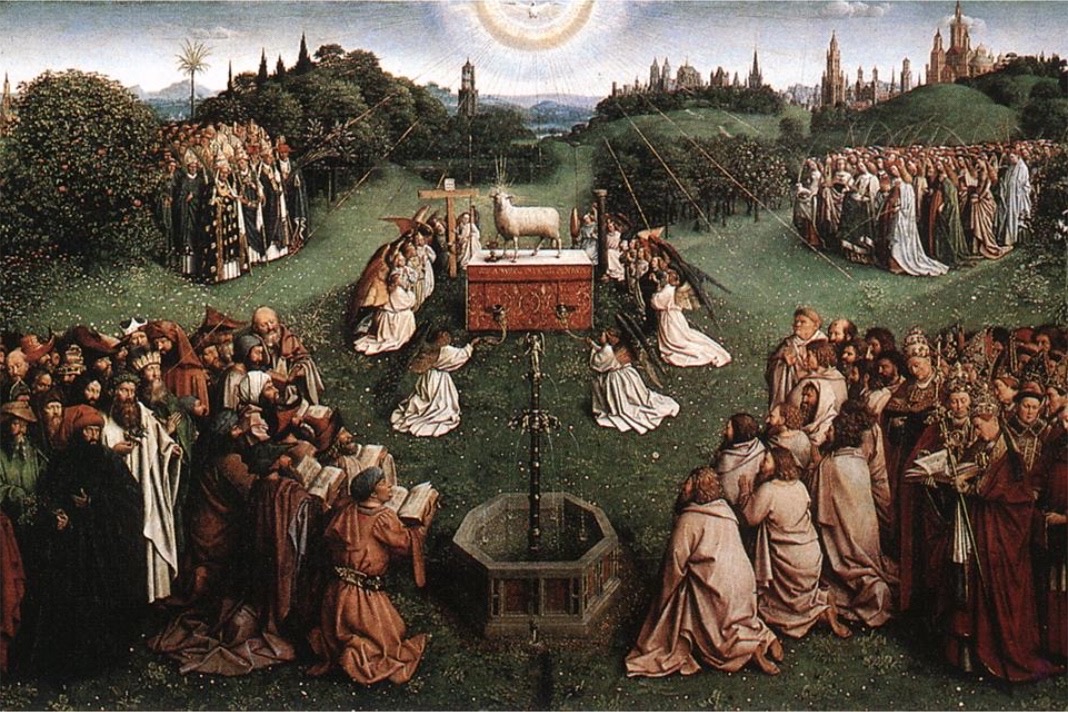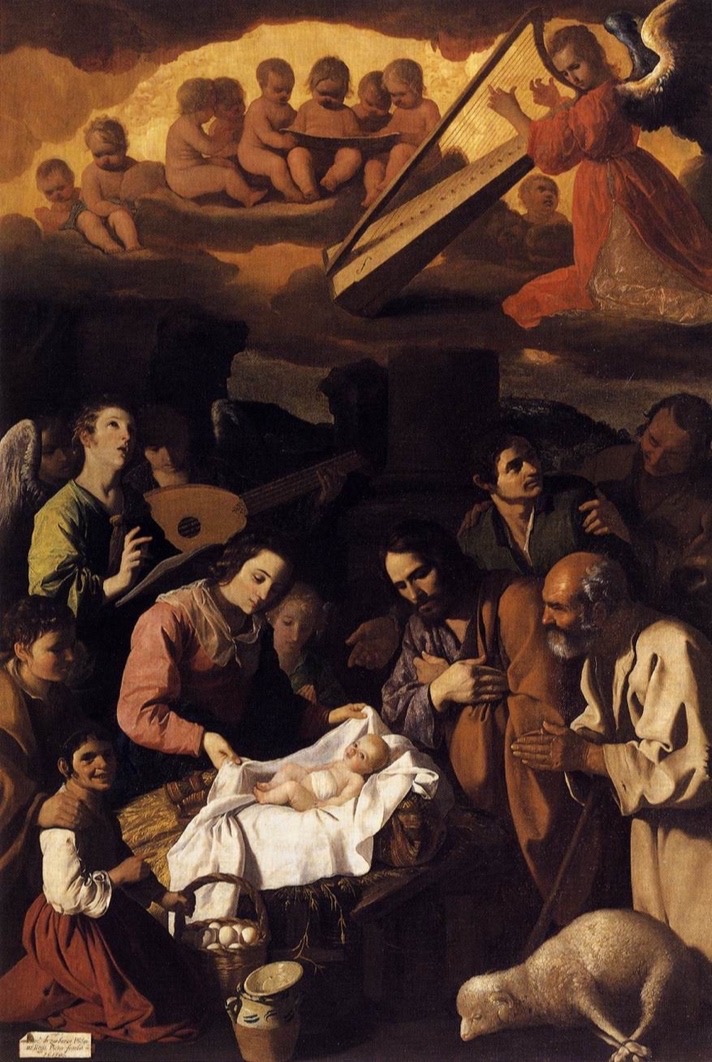The Prayer Workshop begins again soon and, as I prepare to hold this five module exploration of what prayer is, can be, could be in your life, I was asked about the artwork that I have used and why it shows a sacrificial lamb.

Interesting question! And one that I enjoyed, so I thought I would answer publicly, here. I have a truly excellent designer who I work with on the artwork for my website, and we enjoy discussing the choices we make in imagery. It is something much consideration goes into.
The artwork in this case is Lamb of God (or, in Latin, Agnus Dei). It is an oil painting that dates from between 1635 and 1640 and was painted by a Spanish Baroque artist named Francisco de Zurbarán.
It can be viewed, currently, in the Prado Museum in Madrid, Spain.
The painting alludes to a title given to Jesus, as recorded in John’s Gospel (John 1: 29) when John the Baptist describes Jesus as “The Lamb of God who takes away the sin of the World”.
In Christianity, the lamb represents Christ in both suffering and triumph. The lamb is typically depicted as a sacrificial animal, just as it is in the painting. It has also been said to be symbolic of gentleness, innocence, and purity.
John the Baptist
In John 1:29–42 a conversation takes place between Jesus and John the Baptist. This is the moment when Jesus is joined by his first two disciples and Jesus is identified as both “The Lamb of God,” and “The Son of God.”
John describes his vision of the Holy Spirit, in the form of a dove, landing on Jesus. This confirms that Jesus is the Messiah.
At this time, John the Baptist tells two of his followers, John and Andrew, to go and follow Jesus.
They, in turn, introduce Jesus to Peter.
Why ‘Lamb of God?’
The relevance of the lamb comes to those that were offered in sacrifice to take away sin, in the Old Testament. These lambs had to be ‘without blemish’.
32 If someone brings a lamb as their sin offering, they are to bring a female without defect. 33 They are to lay their hand on its head and slaughter it for a sin offering at the place where the burnt offering is slaughtered. 34 Then the priest shall take some of the blood of the sin offering with his finger and put it on the horns of the altar of burnt offering and pour out the rest of the blood at the base of the altar. 35 They shall remove all the fat, just as the fat is removed from the lamb of the fellowship offering, and the priest shall burn it on the altar on top of the food offerings presented to the Lord. In this way the priest will make atonement for them for the sin they have committed, and they will be forgiven.
(Leviticus 4:32–35)
However, believers knew that the blood of animals could not truly take away sin:
It is impossible for the blood of bulls and goats to take away sins.
(Hebrews 10:4).
The practice, in law, of the sacrificial lambs in the Old Testament, points forward to what would happen, eventually, in a final sacrifice for sin.
John is a witness to this, and is saying, in essence, that “it’s happening now. God is sending his own Lamb into the world to take away sin, once and for all.”
The Agnus Dei
Agnus Dei is a liturgical chant used in the Roman Catholic liturgy:
“Lamb of God, who takest away the sins of the world, have mercy upon us! Lamb of God, who takest away the sins of the world, have mercy upon us! Lamb of God, who takest away the sins of the world, grant us peace!”
This comes between the Lord’s Prayer and the Communion. It is said to unite the sacrifice of the liturgy with the sacrifice of Christ on the Cross.
Early Christian Art
In early Christian art, Christ was quite regularly depicted in the form of a lamb.
The lamb symbolism is used not only relative to Christ’s sacrifice on the cross but to his victory over both sin and death.
The symbolic use of the lamb in this way continued for some time.
Only a few years ago, when the restoration of The Ghent Altarpiece, an extremely famous painting by Hubert and Jan van Eyckand, revealed detail in the central pane, named Adoration of the Mystic Lamb, it went somewhat viral due to the human quality of the lamb’s eyes.
If you would like a lovely way to spend some of your browsing time, you can follow the restoration of this piece, in exquisite levels of detail via Macrophotography, here:
We love because he first loved us
For many hundreds of years, paintings of the nativity included objects associated with Christ’s Passion and death.
In the 1600s, when Zurbarán was painting, shepherds were often shown bringing a bound lamb as a gift to baby Jesus. Here, in another painting by Zurbarán, Adoration of the Shepherds, you will see such a lamb depicted in a very similar way to in “Lamb of God”.
The unblemished lamb was, at that time, considered a powerful symbol of Christ, as it showed his innocence and purity alongside his willing acceptance of his sacrifice.
The gift of the lamb is a symbol of devotion and conveys the reason for it: We love because he first loved us.
So why this painting for The Prayer Workshop?
It is tempting to suggest that is an interesting question for you to reflect on, in the personal, after reading all of this.
How does this information make you feel?
How could it relate to the concept of prayer?
How could it frame your thinking about what you are drawn to, ask of, want from prayer?
And how does it relate to what you reject when you consider prayer as a practice that could exist in your life?
Whilst I may not have a striaghtforward answer to why I chose this image, I can promise you that the choice had absolutely nothing to do with offending vegans!
My message would be, if you are keen to explore such ideas for yourself, consider signing up.
It is not a Christian workshop
The Prayer Workshop is not bound by Christianity, although we will, most especially in the first module, consider Christian prayer as we begin with an exploration of asking prayers, which are very often born of monotheistic religions and belief systems.
Despite this, the symbolism of the lamb, in relation to sin, purity, sacrifice, devotion… all of these concepts are relevant to some of the places we may go.
To find out more about The Prayer Workshop you can click here:









